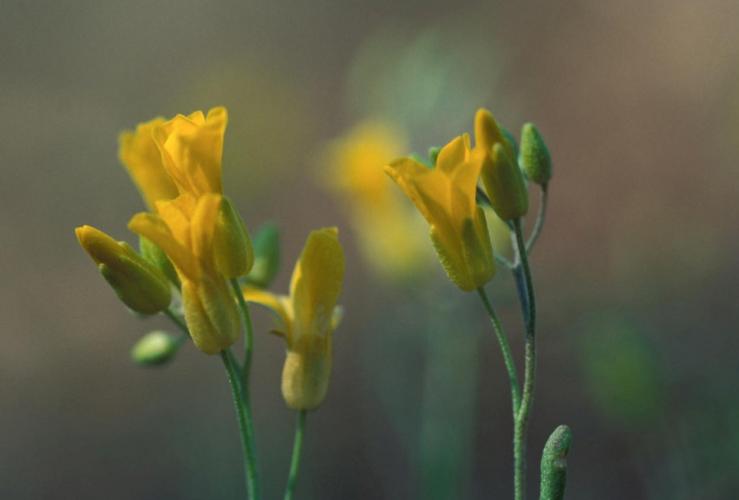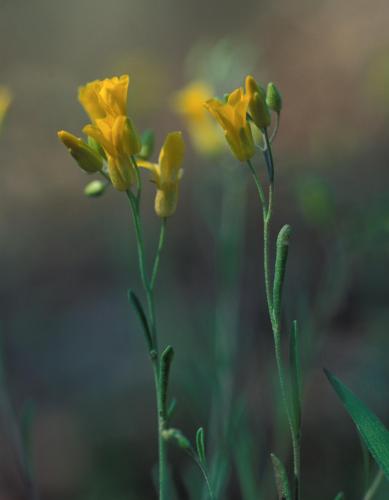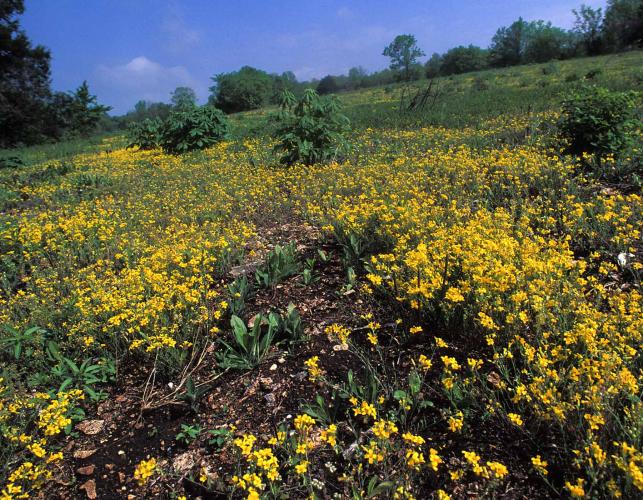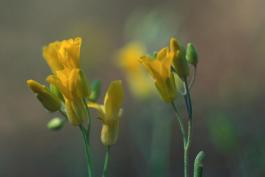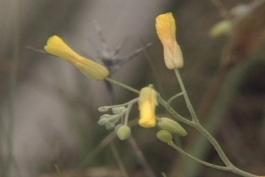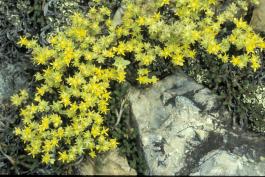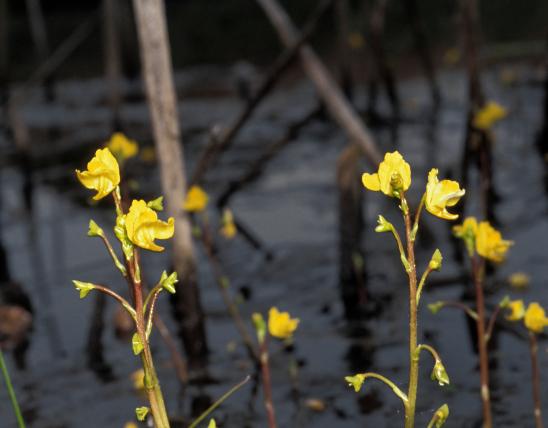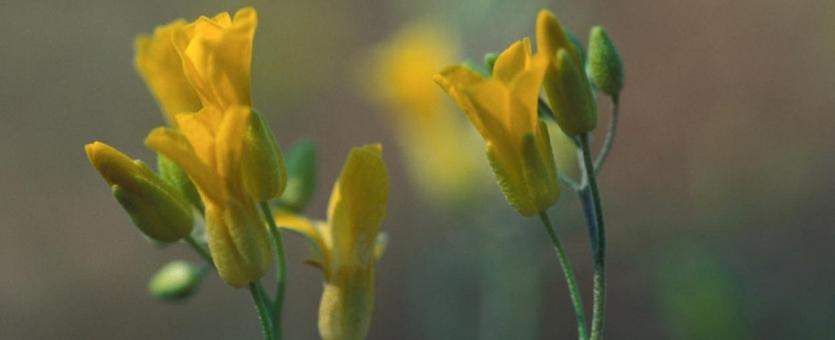
Missouri bladderpod is a non-woody, annual plant that produces numerous slender stems from its base. Leaves are less than an inch long and taper toward the stems. Both the leaves and the stems have a dense covering of fine hairs, which gives the plant a silvery-gray appearance. Blooms April–May. Flowers are typical mustard flowers, with four petals and four sepals. The petals are yellow.
Similar species: One other Physaria species, spreading bladderpod (Physaria gracilis), occurs in Missouri. Unlike Missouri bladderpod, spreading bladderpod does not have a silvery-gray appearance, and it does not occur within the range of Missouri bladderpod.
Height: 4 to 8 inches.

Missouri bladderpod is presently found in the following southwest Missouri counties: Dade, Greene, Christian, and Lawrence.
Habitat and Conservation
Limestone glades and rocky outcroppings. Many populations have persisted in grazed pastures, rocky open woods, and limestone outcrops along roadsides. Protected populations are being managed at Wilson’s Creek National Battlefield (National Park Service), Rocky Barrens Conservation Area (Missouri Department of Conservation), Greenfield Glade (The Nature Conservancy), and Bois d’Arc Conservation Area (Missouri Department of Conservation). Nearly all remaining sites are on privately owned land.
Status
A Species of Conservation Concern: listed as Endangered in Missouri and Threatened federally. Populations of this attractive annual undergo wide fluctuations from year to year in the number of plants present. Many of the glades where it grows have been heavily impacted by quarrying, grazing, construction, and/or fire suppression. Fortunately, some populations are growing on protected lands.
Life Cycle
Flowers from April to May, producing 4-petaled, bright yellow blossoms clustered at the tops of the stems. The small (1/8 inch diameter), round green fruits appear from May to early June and gradually turn brown. Each fruit contains 4 flattened brown seeds. These drop in late May and early June, lie dormant through summer, and germinate in fall. They grow in a rosette, which appears as a tiny, button-sized cluster of leaves, and remains throughout the winter until spring.
Human Connections
Many consider wildflowers the jewels of nature’s garden, and far more valuable than man-made horticultural varieties. Also, an oil can be made from the seeds of various species of bladderpods that can be used for manufacturing resins, waxes, plastics, coatings, and more.
Ecosystem Connections
Limestone glades, where this species grows, are home to an attractive and interesting group of plants and animals that live nowhere else in our state. In order to save this species, we must first protect its habitat. In the process, we help all the other organisms in that habitat.
